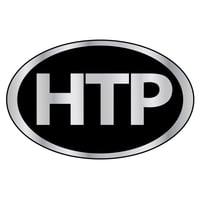Save Energy: Reduce Your Hot Water Usage
The cost of water heating can be rather expensive. Energy.gov has come up with ways to reduce hot water use for energy savings! For more from information from the Department of Energy, go to www.energy.gov.
You can lower your water heating costs by using and wasting less hot water in your home. To conserve hot water, you can fix leaks, install low-flow fixtures, and purchase an energy-efficient dishwasher and clothes washer.
Fix Leaks
You can significantly reduce hot water use by simply repairing leaks in fixtures -- faucets and showerheads -- or pipes. A leak of one drip per second can cost $1 per month.
If your water heater's tank leaks, you need a new water heater.
Install Low-Flow Fixtures
Federal regulations mandate that new showerhead flow rates can't exceed more than 2.5 gallons per minute (gpm) at a water pressure of 80 pounds per square inch (psi). New faucet flow rates can't exceed 2.5 gpm at 80 psi or 2.2 gpm at 60 psi. You can purchase some quality, low-flow fixtures for around $10 to $20 a piece and achieve water savings of 25%–60%.
Showerheads
For maximum water efficiency, select a shower head with a flow rate of less than 2.5 gpm. There are two basic types of low-flow showerheads: aerating and laminar-flow. Aerating showerheads mix air with water, forming a misty spray. Laminar-flow showerheads form individual streams of water. If you live in a humid climate, you might want to use a laminar-flow showerhead because it won't create as much steam and moisture as an aerating one.
Before 1992, some showerheads had flow rates of 5.5 gpm. Therefore, if you have fixtures that pre-date 1992, you might want to replace them if you're not sure of their flow rates. Here's a quick test to determine whether you should replace a showerhead:
- Place a bucket -- marked in gallon increments -- under your shower head.
- Turn on the shower at the normal water pressure you use.
- Time how many seconds it takes to fill the bucket to the 1-gallon (3.8 liter) mark.
If it takes less than 20 seconds to reach the 1-gallon mark, you could benefit from a low-flow shower head.
Faucets
The aerator -- the screw-on tip of the faucet -- ultimately determines the maximum flow rate of a faucet. Typically, new kitchen faucets come equipped with aerators that restrict flow rates to 2.2 gpm, while new bathroom faucets have ones that restrict flow rates from 1.5 to 0.5 gpm.
Aerators are inexpensive to replace and they can be one of the most cost-effective water conservation measures. For maximum water efficiency, purchase aerators that have flow rates of no more than 1.0 gpm. Some aerators even come with shut-off valves that allow you to stop the flow of water without affecting the temperature. When replacing an aerator, bring the one you're replacing to the store with you to ensure a proper fit.
Purchase Energy-Efficient Dishwashers and Clothes Washers
The biggest cost of washing dishes and clothes comes from the energy required to heat the water. You'll significantly reduce your energy costs if you purchase and use an energy-efficient dishwasher and clothes washer.
Dishwashers
It's commonly assumed that washing dishes by hand saves hot water. However, washing dishes by hand several time a day can be more expensive than operating an energy-efficient dishwasher. You can consume less energy with an energy-efficient dishwasher when properly used and when only operating it with full loads.
When purchasing a new dishwasher, check the EnergyGuide label to see how much energy it uses. Dishwashers fall into one of two categories: compact capacity and standard capacity. Although compact-capacity dishwashers may appear to be more energy efficient on the EnergyGuide Label, they hold fewer dishes, which may force you to use it more frequently. In this case, your energy costs could be higher than with a standard-capacity dishwasher.
One feature that makes a dishwasher more energy efficient is a booster heater. A booster heater increases the temperature of the water entering the dishwasher to the 140ºF recommended for cleaning. Some dishwashers have built-in boosters, while others require manual selection before the wash cycle begins. Some also only activate the booster during the heavy-duty cycle. Dishwashers with booster heaters typically cost more, but they pay for themselves with energy savings in about 1 year if you also lower the water temperature on your water heater.
Another dishwasher feature that reduces hot water use is the availability of cycle selections. Shorter cycles require less water, thereby reducing energy cost.
If you want to ensure that your new dishwasher is energy efficient, purchase one with an ENERGY STAR® label.
Clothes Washers
Unlike dishwashers, clothes washers don't require a minimum temperature for optimum cleaning. Therefore, to reduce energy costs, you can use either cold or warm water for most laundry loads. Cold water is always sufficient for rinsing.
Inefficient clothes washers can cost three times as much to operate than energy-efficient ones. Select a new machine that allows you to adjust the water temperature and levels for different loads. Efficient clothes washers spin-dry your clothes more effectively too, saving energy when drying as well. Also, front-loading machines use less water and, consequently, less energy than top loaders.
Small-capacity clothes washers often have better EnergyGuide label ratings. However, a reduced capacity might increase the number of loads you need to run, which could increase your energy costs.
If you want to ensure that your new clothes washer is energy efficient, purchase one with an ENERGY STAR label.
**Visit HTP's Savings Center to learn about energy savings with HTP products.
Water Heating Tips from Energy.gov

